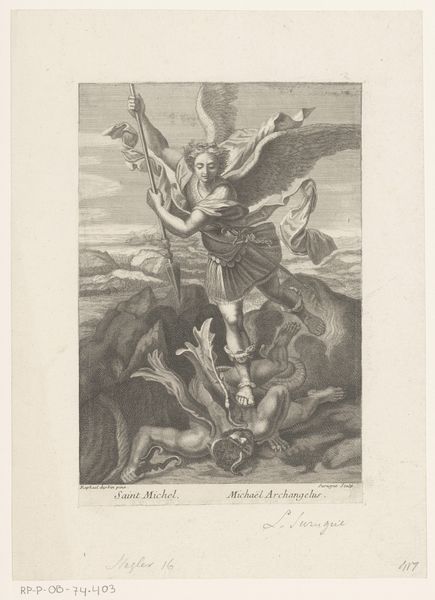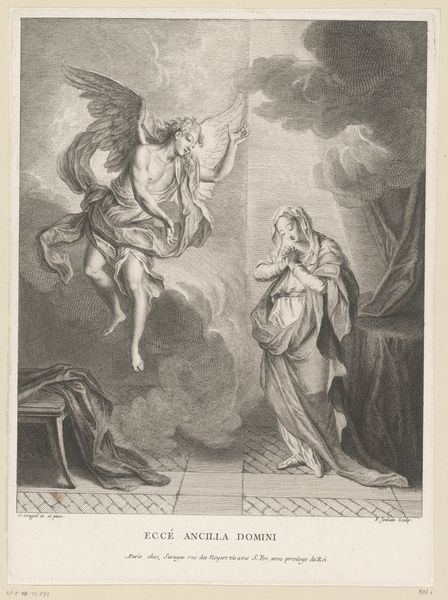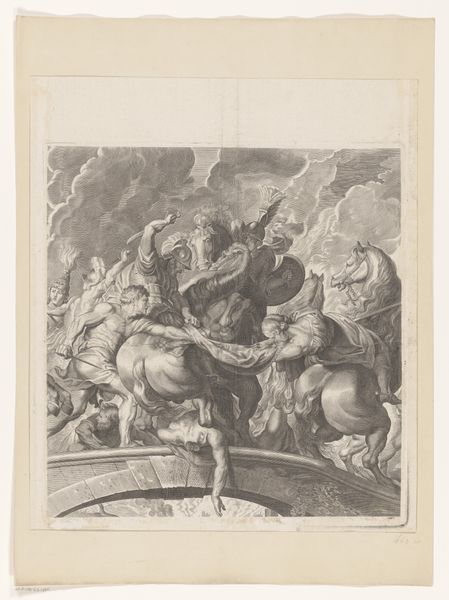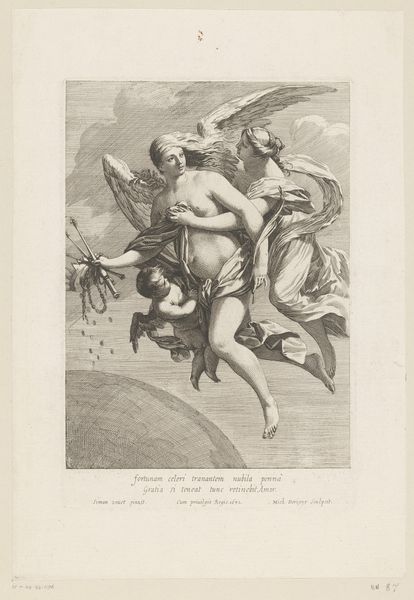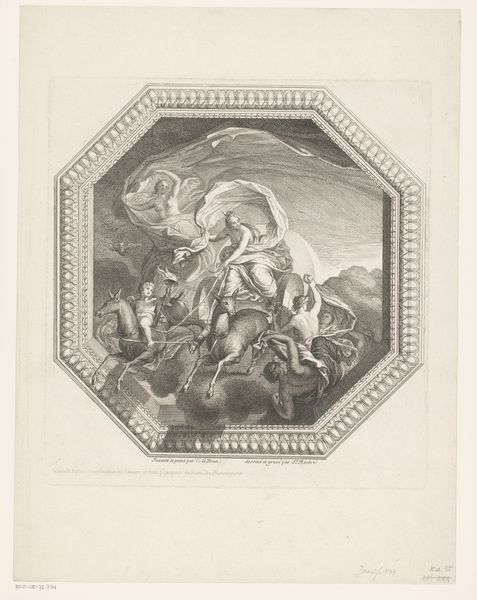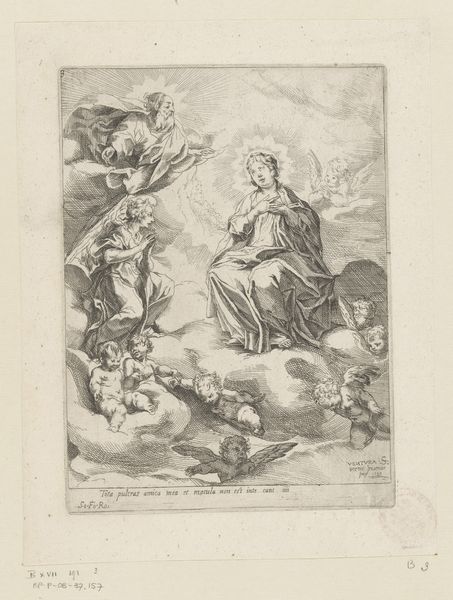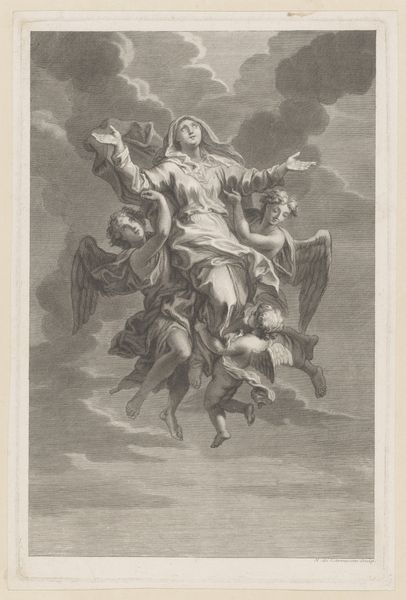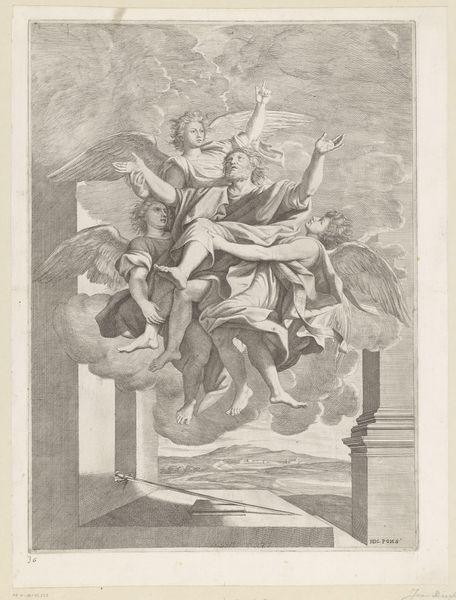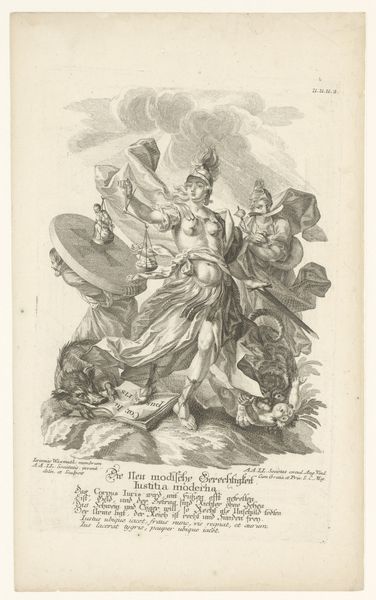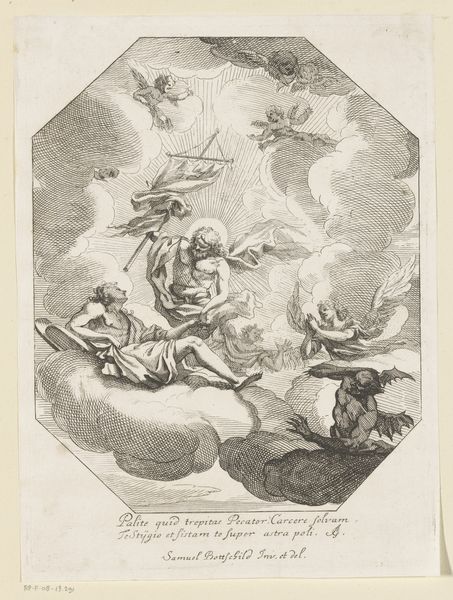
engraving
#
baroque
#
old engraving style
#
figuration
#
history-painting
#
engraving
Dimensions: height 413 mm, width 303 mm
Copyright: Rijks Museum: Open Domain
Editor: Here we have "Saint Paul in Ecstasy" made before 1673 by Guillaume Chasteau, an engraving currently held at the Rijksmuseum. It definitely captures a dramatic moment, all those figures suspended in air. How do you interpret this work? Curator: From a materialist perspective, I’m struck by the process of engraving. Think about the labor involved in creating these fine lines with a burin, the deliberate and repeated action required to produce the image. Editor: So, less about the religious subject, more about the craft itself? Curator: Not exclusively, but considering the means of production illuminates its historical context. Engravings like this were often produced for mass consumption. Reproductions made art accessible. Editor: Accessible how? Were these cheap to produce? Curator: Compared to paintings, yes. Think about the market forces at play, the demand for religious imagery, and how printmaking met that demand by mobilizing skilled artisans. And see here at the base of the cloud the indication of classical architectural motifs. Are these images promoting or criticizing wealth and privilege, what materials or resources can we glean are at the disposal of Chasteau to make artwork that borrows heavily from baroque and classical styles? Editor: That makes me consider the class implications, how certain styles become associated with social status... Curator: Exactly. The consumption of art is a material practice. Engravings circulated widely, shaping public perception, impacting the commerce of imagery. They brought the stories to the masses. Editor: So, beyond the biblical narrative, this work embodies a complex relationship between artistic skill, the printing industry, and socio-economic dynamics? Curator: Precisely. Seeing it as an object of material culture opens up avenues of inquiry. It pushes us to think critically about the making, distribution, and consumption of art in a given society. Editor: That definitely shifted my perspective, now I appreciate how focusing on the "how" enriches understanding of the "what" and "why" behind it.
Comments
No comments
Be the first to comment and join the conversation on the ultimate creative platform.
